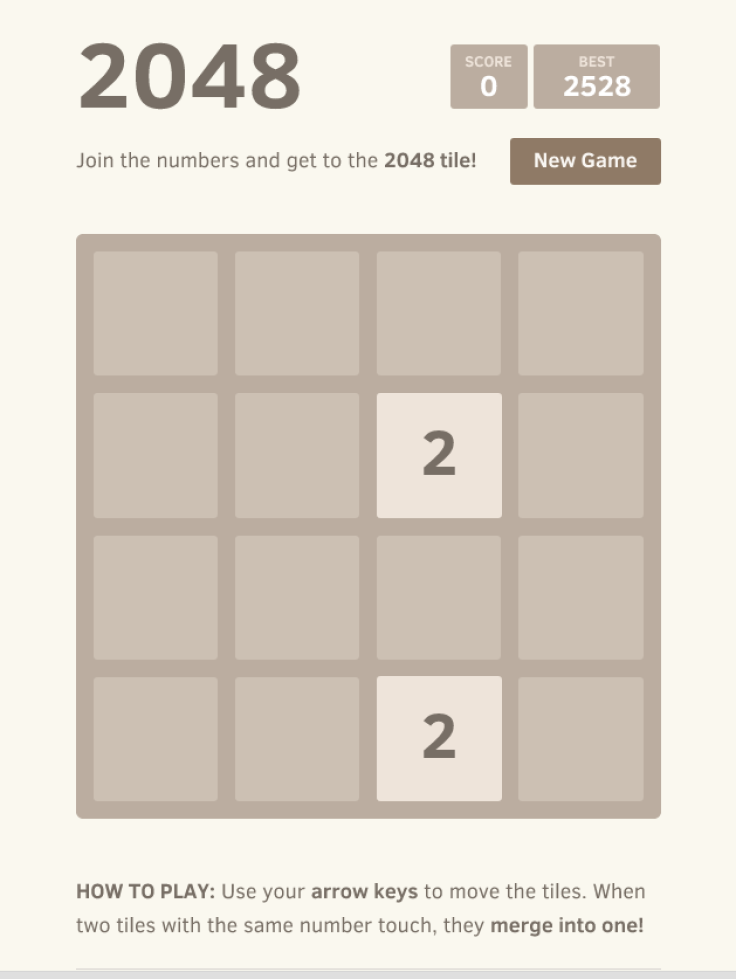What Is '2048'? The Convoluted Origin Of The 'Threes' And '1024' Game Clone Topping App Store Charts

Step aside, “Flappy Bird.” There’s a new game in town, and it has taken the App Store by storm.
“2048,” a sliding-number game developed by 19-year-old Italian designer/developer Gabriele Cirulli, has grown exponentially in popularity since its first appearance on the Web last month, with more than 33 million plays on the official website in only a week, leading to numerous clones. But the origin of "2048" is a convoluted one as it was inspired by a game that happened to be a clone of a small indie game called "Threes!"
The Road to 2048 Starts at Threes
Before “2048” and its numerous predecessors, there was “Threes,” a sliding-number puzzle game where players match numbers to create multiples of three. “Threes” was developed by Sirvo, an independent development team consisting of designer Asher Vollmer, composer Jimmy Hinson and illustrator Greg Wohlwend. Soon after it was released on Feb. 6, “Threes” reached the top of the paid section of the App Store charts, a feat also complemented by 18 positive reviews, earning the game a 92/100 on Metacritic. While “Threes” found early success with its foray into the App Store and later the Google Inc. (Nasdaq:GOOG) Play Store, its accomplishments would be dwarfed by the deluge of clones that followed weeks and months after.
While some of the clones were merely browser ports, such as “ThreesJS,” a browser-based port of “Threes” by developer Angela Li, others began to try to differentiate themselves by using different number combinations or graphics.
1024
Less than a month after the success of “Threes,” another “Threes” clone hit the App Store by the name of “1024.”
“1024,” an app developed by Veewo Studio, follows a similar model to “Threes,” with its slide and match system. But instead of using tiles to build larger multiples of three, “1024” changed up its gameplay model by relying on exponents of the number two. While “1024” saw some success on the App Store, it too would be quickly overshadowed by a faster-paced clone developed by Cirulli.
2048
By this point, several developers attempted to duplicate the success of “Threes” and “1024” with their own clone versions of the tile matching games.
Their successes were paltry in comparison to the success of “2048,” another clone of “1024.” While the gameplay of “2048” follows the same “powers of two” tile-matching gameplay of “1024,” the Italian clone eschews the use of a random static block that forces players to find a way to navigate around, for a more rapid-paced number matching game.

Cirulli has since found viral success for “2048,” which can be played for free on mobile and desktop devices through GitHub, a website where developers share software development projects. Cirulli chose not to monetize the game because he didn’t consider the game his own, according to an article in The Wall Street Journal.
In another twist, the “2048” game currently sitting on the top of the App Store on iOS isn't actually distributed by Cirulli, who claims that other apps or sites purporting to be “2048” are derivatives or fakes (while also acknowledging the origins of “2048” as well):
“This site is the official version of 2048. You can play it on your phone via http://git.io/2048. All other apps or sites are derivatives or fakes, and should be used with caution.”
App Store Clones
While the “2048” app distributed on the App Store by Ketchapp describes itself as “inspired by [the] Gabriele Cirulli game available on the Web,” it continues to ride on the success of original “2048,” “1024” and “Threes,” with its comfortable place as the top overall app on the App Store.
As with “2048’s” inspirations and predecessors, the hit number-matching game has also spawned numerous clones as well, including a Doge themed “2048.”
In the Google Play store, about 200 “2048” clones have also made their way into the app marketplace.
Whether “2048” and its clones will continue to grow exponentially has yet to be seen, but it hasn’t shown any sign of stopping anytime soon.
© Copyright IBTimes 2024. All rights reserved.












